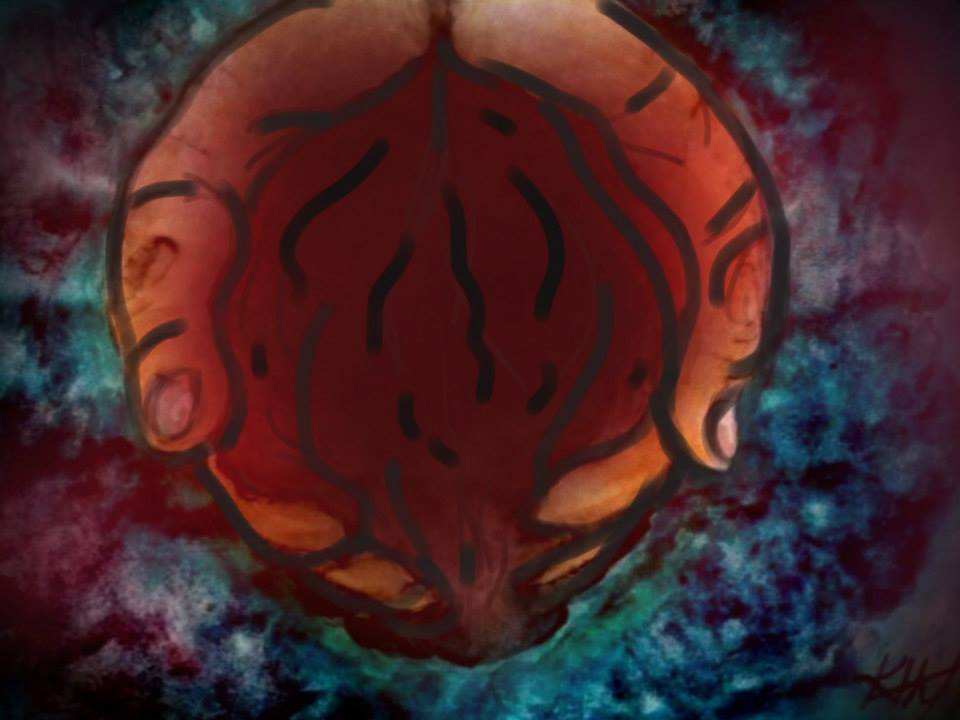 |
| Illustration Keera Ratnam |
The following account written by Paul M.M. Cooper is based on survivor interviews to Tamils Against Genocide (TAG). Personal details of Ainkaran (not his real name), place names and dates have been changed to protect his identity.
Ainkaran volunteered in a hospital in the contested North East of Sri Lanka when the government began its final offensive on the Tamil separatists. It was 2009, and the outlook was grim for the LTTE. The cadres had set up fortified settlements far behind the frontline in order to escape the artillery of the Sri Lankan Army, but there were some shells, with a range of 3-5km, that could still reach even these safe havens.
As the fighting intensified and the shells began to fall, Ainkaran helped to spread the sign of the International Red Cross across the roof of a school building that they had converted into a hospital. From up on the roof, you could already see the smoke rising over the trees, and hear the distant thud of the artillery.
When artillery fired, you first heard a deep boom far away, and then after just one second, you knew the shell would be falling. On other days, you could see the sharp shadows of the Israeli-made Kfir jets flying in squadrons of three, swooping in low and dropping their bombs. There were helicopters, too, spraying bullets and rockets into the trees.
The army declared Puthukudiiruppu, Mullaitivu and Mulliavalai as no-fire zones, but people said shells were landing even there, so no one went towards them. When a shell fell through the roof of the Ainkaran’s hospital, about 50 people died on the spot. Ainkaran helped to carry the wounded, and drive them to other makeshift hospitals being run by volunteers. One woman had her intestines spilling out of a wound.
When people died, they were laid out in lines outside the hospital, and relatives could come and identify them. If no one came for them after two days, they were buried all together. Many people were too afraid of the shells to come and look for their relatives there, so many were buried without their names.
Ainkaran hid in a bunker in the few moments of rest he could snatch each day. The days blurred together. There were unmanned spy drones circling constantly, and their mosquito whine never left your ears.
In Suthanthirapuram, a place which in Tamil means 'free village', a safe zone was established so as to facilitate the distribution of dry food through the World food programme. Ainkaran saw almost 50,000 people gathered there – men, women and children – simply sitting on the ground in a crowd so thick you couldn’t get a vehicle through. There was sobbing, wailing, prayers. 20,000 people were queuing for their ration of dry food, and Ainkaran watched them from his bunker nearby.
Then, from the direction of the Sri Lankan Army lines, the artillery opened up a devastating barrage of fire. The guns fired simultaneously, all at once, into the densely populated areas of the safe zone. Around 500 people were killed instantly, their bodies shattered. Nearly 1,000 were seriously wounded. The tents all around were torn to shreds, and the rations of dry food were destroyed too.
When the army came, they came shooting. Many people ran through the trees towards the army lines, but they were shot, so people stayed where they were and prayed. The shells fell in a sequence, each one falling about 10m further on from the last one. It was as though the army was trying to push people back, combing them out of the jungle, driving them into the sea.
The shells fell on food tents and hospitals alike, under the watchful eye of the circling spy drones. In the next no-fire zone Ainkaran moved to, a hospital bearing Red Cross insignia was struck with such force that it was razed to the ground completely. When the army fired a shell, they waited about half an hour before firing another one directly on top of the first – a deadly tactic designed to finish off anyone who escaped and kill those who rushed to help the wounded.
Ainkaran helped treat people even as medical supplies began to dwindle. The wounded were laid out on a table beneath the tamarind tree, as the doctors conducted operations without antiseptic or painkillers. They tore up bedsheets and sarongs to use as bandages. The patients screamed in pain. People came with eyes dropping out, their skulls split open, with shrapnel in their throats. There were only 6 beds. They treated about 50 every hour.
When Ainkaran worked there, he saw four civilians carried in, moaning, with their bodies burnt all over. The other doctors whispered that it had been a chemical attack.
Space was beginning to run out. People were being settled even in areas that were flooded, and they arrived with their clothes soaked, their documents ruined, their possessions waterlogged. A Red Cross ship arrived periodically to take away those wounded who had a token, and who they thought might survive. They took about 300-400 at a time. Ainkaran and others pleaded with the Sri Lankan army to send them medicine, but the army refused.
When Ainkaran himself was injured in a shell attack, it didn’t stop him trying to help others. He took one day off his work, and then returned to the hospital, to the screams of the patients and dead men and women outside, lined up on the ground without their names.
This month marks the fifth anniversary of the end of the war in Sri Lanka. Ainkaran’s story is also that of thousands of survivors of Sri Lanka’s Killing Fields.
Say No to Genocide.
May 2009 profiles
Mayuran
Ahalya
